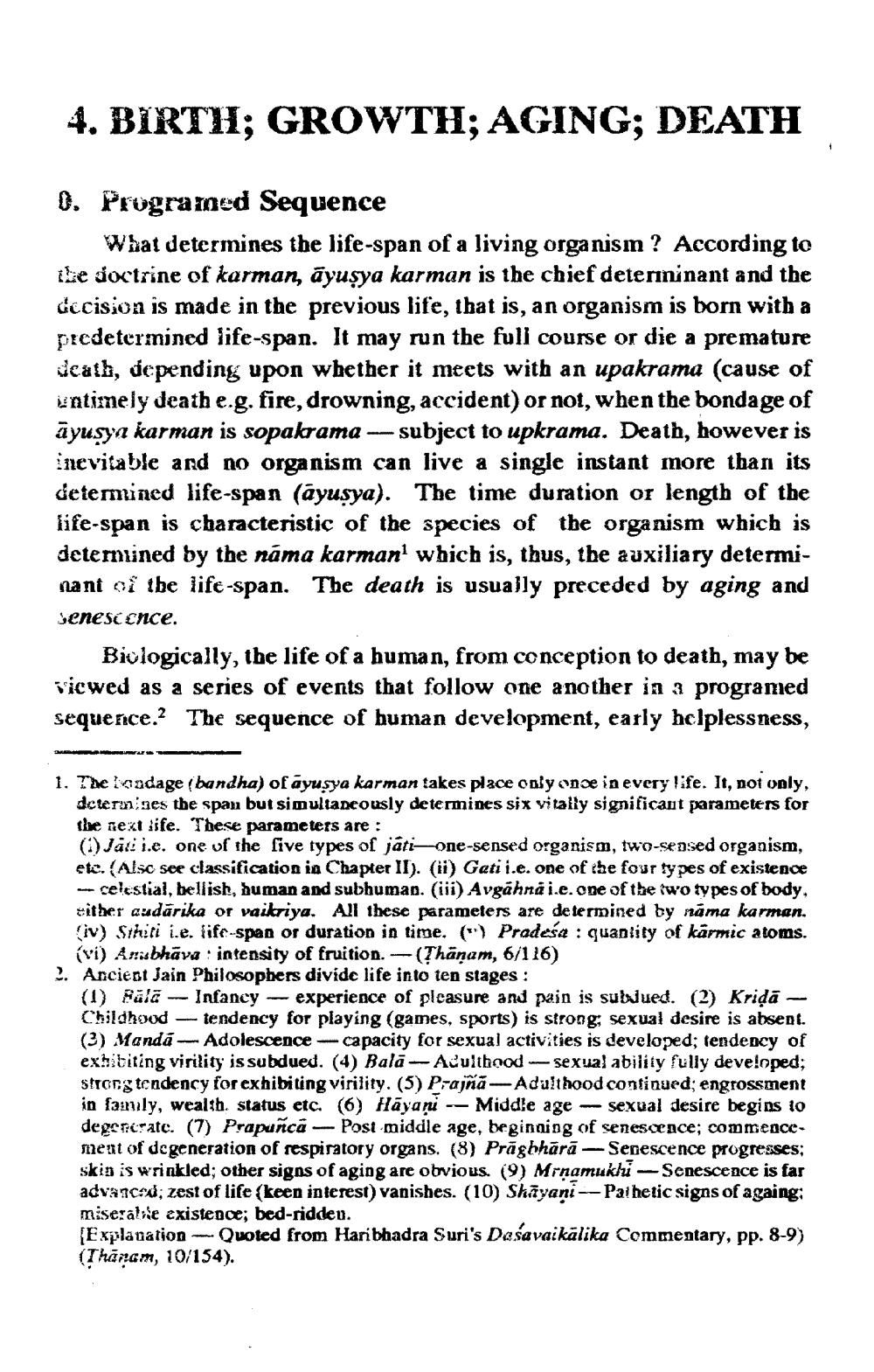________________
4. BIRTH; GROWTH; AGING; DEATH
0. Programned Sequence
What determines the life-span of a living organism ? According to the doctrine of karman, āyuşya karman is the chief detenninant and the decision is made in the previous life, that is, an organism is born with a predetermined life-span. It may run the full course or die a premature death, depending upon whether it meets with an upakrama (cause of untimely death e.g. fire, drowning, accident) or not, when the bondage of āyusya karman is sopakrama -- subject to upkrama. Death, however is inevitable and no organism can live a single instant more than its determined life-span (ayusya). The time duration or length of the life-s is characteristic of the species of the organism which is detemined by the náma karman' which is, thus, the auxiliary determinant si tbe life-span. The death is usually preceded by aging and Senesi cnce.
Biologically, the life of a human, from conception to death, may be vicwed as a series of events that follow one another in 3 programed sequence. The sequence of human development, early helplessness,
1. The loadage (bandha) of ayusya karman takes place only once in every life. It, not only,
dcter aes the span but simultaneously determines six vitally significant parameters for the next life. These parameters are : (1) Jaul.e. one of the five types of jati-one-sensed organism, two-seosed organism, etc. (Also see classification in Chapter II). (ii) Gati i.e. one of the four types of existence
celestial, bellish, human and subhuman. (iii) Avgähnå i.e. one of the two types of body, fither audārika or vaikriya. All these parameters are determined by náma karman. (iv) Sthiti i.e. fiff-span or duration in time. () Pradesa : quaplity of karmic atoms.
(vi) &nbhāva : intensity of fruition. (Thanam, 6/116) 2. Anciest Jain Philosophers divide life into ten stages :
(1) Müla - Infancy - experience of pleasure and pain is subued. (2) Krida - Childhood -- tendency for playing (games, sports) is strong, sexual desire is absent. (3) Mandă ---- Adolescence - capacity for sexual activities is developed; tendency of exhibiting virility is subdued. (4) Bala - Aưulthood - sexual ability fully developed; strong tendency for exhibiting virility. (5) Prajñā - Adulthood continued; engrossment in famuly, wealth. status etc. (6) Hāyani -- Middle age sexual desire begins to degene atc. (7) Prapunca - Post-middle age, beginning of senesance; commence. ment of degeneration of respiratory organs. (8) Prāgbhārā ---Senescence progresses; skin is wrinkled; other signs of aging are obvious. (9) Mrnamuklu Senescence is far advanc:d; zest of life (keen interest) vanishes. (10) Shayani -- Pai hetic signs of againg: miserale existence; bed-riddeu. [Explanation - Quoted from Haribhadra Suri's Desavaikälika Commentary, pp. 8-9) (Thanam, 10/154).
1
Adolesindued. (4) Barus) Prajna




